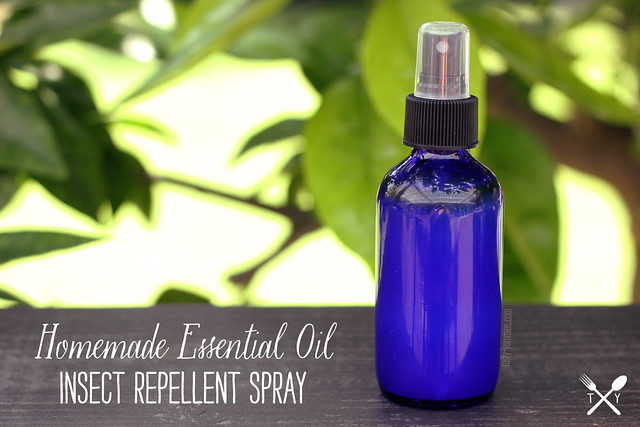How to Make Your Own Natural Insect Repellent
While commercial insect repellents are readily available, many of them contain chemicals that some people prefer to avoid. Thankfully, you can make your own natural insect repellent right at home. In this guide, we'll explore various recipes and techniques to help you stay bug-free the natural way.

How to produce natural insect repellant at home
The warm summer months bring with them a plethora of outdoor activities, from picnics and hikes to camping trips and garden parties. However, they also usher in an unwelcome guest – insects! Mosquitoes, flies, ticks, and other bugs can quickly turn a pleasant outdoor adventure into an itchy nightmare. While commercial insect repellents are readily available, many of them contain chemicals that some people prefer to avoid. Thankfully, you can make your own natural insect repellent right at home. In this guide, we'll explore various recipes and techniques to help you stay bug-free the natural way.
Understanding Natural Insect Repellents
Before we dive into the recipes and methods for making your own natural insect repellent, it's essential to understand how these repellents work. Natural insect repellents typically work by masking the scent of your body or by using ingredients that insects find unpleasant. Some common natural repellents include:
Essential Oils: Many essential oils, such as citronella, lavender, eucalyptus, and peppermint, are known for their insect-repelling properties. These oils contain compounds that insects find offensive, making them effective natural repellents.
Herbs and Spices: Certain herbs and spices, such as basil, rosemary, and cloves, emit odors that insects dislike. Planting these herbs in your garden or using them in your repellent can help keep bugs at bay.
Vinegar: Vinegar's strong odor can deter insects. When used as part of a repellent, it can help create a protective barrier against bugs.
Natural Extracts: Some natural extracts, like lemon and vanilla, have insect-repelling qualities. You can incorporate these extracts into your homemade repellent recipes.
DIY Traps: In addition to repellents applied to the skin, you can make DIY insect traps using ingredients like sugar and yeast to attract and capture insects.
Now that you have a basic understanding of natural insect repellents, let's explore some simple recipes and techniques to create your own bug-fighting concoctions.
Homemade Insect Repellent Recipes
- Essential Oil-Based Repellent Spray
Ingredients:
- 10-15 drops of essential oil (e.g., citronella, lavender, eucalyptus, or peppermint)
- 2 tablespoons of carrier oil (e.g., olive oil, coconut oil, or sunflower oil)
- 1 tablespoon of witch hazel or vodka
- 1/2 cup of distilled water
Instructions:
Mix the essential oil and carrier oil in a small bowl.
Add the witch hazel or vodka and stir well.
Pour the mixture into a spray bottle.
Add the distilled water and shake the bottle vigorously to combine all the ingredients.
Apply the spray to exposed skin before heading outdoors, reapplying as needed.
Lemon and Eucalyptus Repellent Lotion
Ingredients:
- 15-20 drops of lemon eucalyptus essential oil
- 1/2 cup of shea butter or coconut oil
- 1/4 cup of beeswax pellets (optional for a thicker consistency)
- 1 teaspoon of vitamin E oil (as a preservative)
Instructions:
In a double boiler, melt the shea butter or coconut oil (and beeswax, if using).
Remove from heat and let it cool slightly.
Add the lemon eucalyptus essential oil and vitamin E oil.
Stir the mixture thoroughly.
Pour the repellent lotion into a container or tin.
Allow it to cool and solidify.
Apply to your skin before going outdoors, focusing on exposed areas.
Natural Bug-Repelling Candles
Ingredients:
- Beeswax or soy wax
- Essential oils (e.g., citronella, lavender, or cedarwood)
- Candle wicks
- Mason jars or candle molds
Instructions:
Melt the wax in a double boiler.
Add your chosen essential oils (usually 15-20 drops per cup of melted wax) and stir well.
Secure the candle wick at the bottom of the jar or mold.
Pour the melted wax into the container or mold.
Let the wax cool and harden, trimming the wick to the desired length.
Light the candle outdoors to create a bug-repelling ambiance.
DIY Herb Garden
If you have the space, consider planting insect-repelling herbs in your garden or on your patio. Some effective herbs include basil, rosemary, mint, and citronella grass. These plants not only help deter insects but also provide a fresh aroma for your outdoor space.
Application Tips
Test on a Small Area: Before applying any homemade repellent to your skin, conduct a patch test on a small area to ensure you don't have an adverse reaction.
Reapply as Needed: Natural repellents may not last as long as chemical alternatives. Reapply them every couple of hours or as directed on the product label.
Avoid Sensitive Areas: Keep repellents away from your eyes, mouth, and any open wounds or cuts.
Keep Ingredients Handy: Store your natural repellent ingredients in a cool, dark place to maintain their effectiveness.
Additional Tips for Staying Bug-Free
While natural insect repellents are a great way to ward off bugs, there are other steps you can take to minimize your exposure to insects:
Wear Protective Clothing: Cover your skin with long-sleeved shirts, pants, and closed-toe shoes when possible.
Avoid Peak Mosquito Times: Mosquitoes are most active during dawn and dusk, so plan outdoor activities accordingly.
Eliminate Breeding Sites: Remove standing water from your property to prevent mosquitoes from breeding in puddles or containers.
Use Mosquito Nets: When camping or sleeping outdoors, use mosquito nets to create a barrier between you and insects.
Staying bug-free during the summer months doesn't have to involve harsh chemicals or expensive commercial products. With the recipes and techniques provided in this guide, you can create your own natural insect repellents that are safe, effective, and eco-friendly. Whether you opt for essential oil sprays, homemade lotions, or bug-repelling candles, you'll be able to enjoy the great outdoors without the annoyance of pesky insects. So, gear up, head outside, and savor the beauty of nature while staying bug-free the natural way.
What's Your Reaction?




















.jpg)